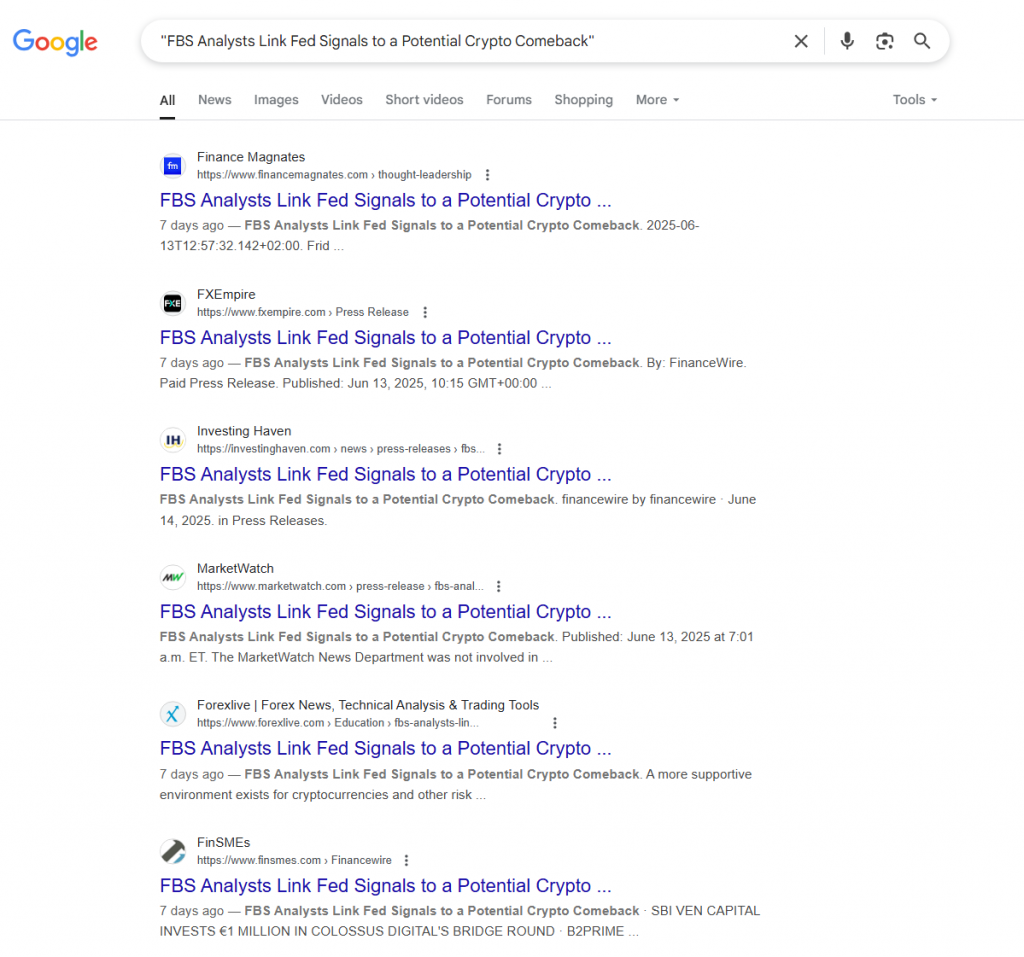In this detailed guide, we’ll share a roadmap for financial services marketing using a combination of promotional and educational strategies to become your audience’s preferred choice.
According to Google, the search volume for keywords like “should I invest in” and “retirement calculator” has dramatically increased over the last few years.
Your audience is looking for a guiding hand, which is a clear opportunity for you to market your services by providing real, tangible value.
Before diving into why marketing for financial services is essential, let’s start with some perspective about your competitive landscape:
US financial services companies spend over $31 billion in digital advertising in 2023. Meaning this industry, which used to rely heavily on traditional marketing channels, has fully embraced online marketing.
You neeed to step up and make sure your brand is grabbing the spot it deserves.
In this post you’ll learn how to go beyond promotional campaigns and design marketing strategies to educate your audience, help them achieve financial goals, and become their go-to knowledge source, while creating a strong digital footprint.
We’ll discuss digital marketing tactics specifically for finance, including PR, PPC (paid ads), SEO, content marketing, email marketing, influencer- and affiliate-marketing.
Now let’s dive in.
Table of Contents
What Is Financial Services Marketing, And Why Is It Important?
Marketing in finance involves promoting financial services and products to relevant consumers and businesses using online marketing channels. Financial services typically include:
- Banks
- Insurance companies
- Investment firms & banks
- Credit card unions
- Accounting and bookkeeping firms
- Brokerage firms
- Tax consulting companies
- Financial advisors
- Wealth management facilities
As a financial marketer, your goal is to generate leads and create awareness about your services by showing prospects how working with you benefits their business and helps them achieve their financial goals.
On the face of it, financial marketing tactics are similar to any other industry – SEO, social media, PPC campaigns, etc.
In reality, though, marketing in finance is significantly more challenging than most other industries.
Here’s why:
- Financial Regulations: Federal and state institutions regulate financial services marketing to prevent fraud, misleading claims, discrimination, and other practices that hurt consumer interests. For instance, SEC Rule 206(4)-1 restricts how investment advisers use testimonials — meaning even a satisfied client quote can trigger compliance issues if not handled correctly.
- It’s Harder to Gain Customer Trust: Using financial products or services means customers have to disclose sensitive financial information. So, service providers have to work harder to win consumer trust and drive sales.
- Intense Competition: The financial services industry has become increasingly competitive over the years, with some of the world’s largest financial institutions investing heavily in digital marketing channels. Consequently, marketing and advertising costs have also increased, making it harder to stand out.
However, this also presents an opportunity for financial marketers to look beyond sales-focused marketing campaigns and devise long-term strategies focused on building a strong relationship with the audience by providing value and positioning their brand as an authority.
In the rest of this article, we’ll discuss specific financial services marketing strategies to help you achieve this goal.
Financial Services Marketing: 8 Tactics To Grow Your Business
An effective marketing strategy for financial services blends education with product promotion. It uses a combination of push and pull marketing methods to demonstrate an understanding of customer problems, build loyalty through free value, and position itself as the best solution.
So where do we start? First, we dive deep to understand your audience’s pain points and problems.
For example, the challenges and problems of a banking client are different from those of an insurance prospect or a company looking for new investment avenues.
Without zooming into your audience’s real issues, you cannot create helpful content that resonates with them.
Based on your research, create buyer personas that represent your client types. A persona is a sample profile of a client that helps you empathize with their challenges and come up with tailored solutions.
Once you know your audience’s problems, you can use the following marketing strategies to attract them to your business.
1. Publish Press Releases on Tier 1 Finance News Sites
For financial services brands, visibility in the right media channels isn’t a nice-to-have, it’s a growth lever.
Financial press releases, when used strategically, are one of the most direct ways to reach the audiences that matter: investors, analysts, fintech professionals, and financially-savvy readers actively consuming market updates and economic insights.
A press release is a structured announcement distributed through a financial newswire, a syndication service that guarantees placements across relevant finance and fintech publications.
Unlike general PR services that push content to broad or off-topic sites, a specialized PR newswire like FinanceWire ensures your message appears where your audience actually spends time.

Take FBS as an example. The global trading platform recently published a market analysis linking dovish Fed signals to a potential crypto resurgence.
Rather than burying that insight in a blog post / X post, or hoping for earned coverage, they packaged it as a press release and distributed it via FinanceWire. The result: guaranteed placements on Business Insider, MarketWatch, Investing.com, Benzinga, ADVFN, InsiderMonkey, FINSMES, and other verticals their target audience reads and trusts.

This approach wasn’t about chasing journalists, it was about using high-authority distribution to deliver market-relevant content directly into the information flow of decision-makers, traders, and finance professionals.
The takeaway? If you have original research, forecasts, or analysis that adds value to the financial conversation, don’t just publish it on X, your blog, or Medium. Syndicate it through a relevant financial PR newswire. With the right distribution, financial PR becomes more than awareness, it becomes a scalable marketing channel.
2. Drive Growth With PPC Marketing Campaigns
Pay Per Click (PPC) is used for search engine marketing (SEM) – showing your site as a sponsored listing for your target keywords in Google’s search results.
This can be costly depending on your competitors, but using accurate seach intent keywords is also the quickest way to attract ultra relevent prospects to your website.
Social media platforms like Facebook and LinkedIn also offer PPC ads, although they’re not built on user’s search intent. They target people who answer some criteria defined by you. Then, the platform tries to show an ad at the right place, at the right time.
PPC advertising helps you get your marketing campaign off the ground and instantly drive traffic to your website. Instead of organically ranking for a keyword with SEO, you can pay Google Ads to show your site for your target keyword.
Advertising platforms also give you detailed audience targeting filters to show your ads with precision:
- Location
- Age
- Interests,
- Behavior
This is why most banks, insurance providers, and other financial service companies use PPC marketing to generate leads and promote limited-time campaigns.
However, PPC ad campaigns do not impact your site’s organic SEO rankings. You have to constantly invest in ads to drive traffic.
This is why intelligent financial marketers use PPC ads to grow their email lists and generate leads. Once a visitor converts into an email subscriber, you can communicate directly, nurture the relationship, and convert them into customers.
Here’s how marketers use PPC campaigns
- Create a targeted offer
- Design a dedicated landing page to promote the offer and convert ad traffic into leads.
- Use advertising scripts on the landing page to track user activity and enable retargeting.
- Run PPC ads to drive traffic to the landing page.
Important note: Google Ads have an additional verification requirement for financial service providers before they can run a campaign. You must disclose the nature of your business and whether you’re an authorized service provider with an active license to offer services.
Other advertising platforms have similar requirements to prevent financial fraud and protect consumers.
3. Publish SEO-Optimized Problem-Solving Content
Apart from a day-to-day communication strategy, you must invest in a comprehensive and long-term content marketing strategy.
Why is this important?
A content marketing strategy benefits your business in several ways:
- It answers the fundamental questions of your audience, shares actionable advice for long-term financial success, and positions your brand as an authority.
- It helps you rank your website for hundreds of long-tail search keywords and attracts thousands of visitors.
Unlike PPC ads, SEO and content marketing are long-term commitments that take a few months to produce results. However, the seeds you plant with your content strategy bear fruits for years without additional expense.
For example, Money.co.uk ranks number one for the keyword “where to invest money in UK” which gets approximately 1300 searches every month.
They published this article years ago, but it keeps driving traffic to their site, converting it into email subscribers and customers.
How do you create an SEO-focused content marketing strategy?
Start by understanding your audience’s needs and most frequently asked questions using search engine insights and keyword research tools like Ahrefs or SEMRush.
Let me show you an example.
Let’s say you’re marketing an investment management company and want to understand your audience needs.
We’ll use a handy search insights tool called Keywords Everywhere that displays the approximate search volume of every keyword in search results.
Now type a relevant keyword, for example, “investing money for beginners” without pressing the Enter key to get a list of Google’s search suggestions.
You can see the search volume for every keyword highlighted in green because of the tool Keywords Everywhere.
All of these keywords are questions your prospects are searching on Google. For example, “best stocks for beginners with little money” is a search phrase with almost 10,000 monthly searches.
If you scroll down Google’s search results, you’ll find a long list of questions under the People Also Ask section.
These are your audience’s most frequently searched questions that clearly show you the topics they want to learn about.
You can target each question in a separate article and build a high-value blog on your site where your prospects can find all the answers.
This is just one example of how you can understand audience needs.
Other methods include competitor research, in-depth keyword research, social media analysis, and exploring forum discussions.
Instead of using your blog for company updates or product announcements, make it a content hub full of value for your audience. With consistent effort, content marketing can become your most reliable source of traffic and leads.
4. Share Detailed Case Studies And Success Stories
Case studies are among the most persuasive forms of social proof that give your prospects an inside look at your methods, how you deal with clients, and how you solve complex problems.
They give your B2B prospects a virtual tour of your business and show them your capabilities.
In a recent interview, Hubspot’s Product Marketing Manager, Sam Cahoon, revealed publishing case studies increased their revenue by 74%.
Adding financial case studies to your content mix can help you attract visitors and convert prospects into customers.
For example, an insurance company’s case study page can feature detailed accounts of how its products support clients in recovering damages and minimizing risks.
Similarly, an audit firm can publish case studies showing how they helped clients identify gaps and optimize financial processes.
Global financial firms like EY and Deloitte have detailed case study sections on their sites you can learn from.
A compelling case study doesn’t have to be a 10-page document.
It can be a brief 1-2 document covering the following:
Challenge: What was the problem your client hired you to solve
Process: What steps did you follow from client onboarding to service delivery
Outcome: How working with you solved the client’s problems and helped them achieve their financial goals
Many financial services companies use video case studies and client stories to make them more engaging.
JPMorgan’s video case study is a great example featuring client interviews to add authenticity.
You can’t reveal everything in a case study because of your client’s privacy concerns. Sometimes, you might even have to keep the client’s identity confidential.
But make sure your case study demonstrates your processes, high-level strategy, and things that make you different from your competitors.
5. Add A Financial Discussion Forum To Your Site
Adding an active discussion forum to your website is an excellent way to increase customer engagement and loyalty to your brand.
It’s also among the best ways to increase your brand’s search authority through unique user-generated content.
Google introduced a major search algorithm update in the last quarter of 2023 called Helpful Content Update (HCU). It instantly boosted the search ranking of forum sites like Reddit and Quora because it contains authentic and helpful user-generated content.
However, a study of over 50 active forums found that 88% experienced a significant traffic boost after HCU.
Wall Street Oasis forum, with thousands of threads and millions of messages, is an excellent example for financial service providers.
So, how can your banking, insurance, audit, or investment consultancy use an online forum?
Start by creating a dedicated forum section on your site using a platform like vBulletin, bbPress, or BuddyPress. Then, create the main forum sections where users can start discussion threads.
For example, an investment consultancy’s forum can have the following section.
General Investment Discussions
- Market News and Updates
- Beginner’s Corner
Specific Investment Categories
- Stocks and Bonds
- Real Estate Investing
- Retirement Planning
- Cryptocurrencies and Alternative Investments
Educational Resources and Tools
- Webinars and Workshops
- Investment Tools and Calculators
- Reading Material
Q&A and Advice
- Ask the Experts
- Personal Investment Advice
Client Success Stories and Testimonials
Regulatory and Compliance Corner
- Legal Updates
- Compliance Discussions
Starting an online forum does come with its challenges.
For example, you’ll need a dedicated moderation team to ensure your forum doesn’t become a spamming ground.
Similarly, you’ll require your employees and experts to dedicate time to engage with the audience and answer their queries.
You’ll also need to carefully design a forum policy to ensure everyone knows what they can and cannot discuss publicly.
However, despite these administrative challenges, the benefits of starting an online forum make it a worthwhile investment.
6. Use Segmentation For Targeted Email Marketing
We’ve already discussed the benefit of using a weekly email newsletter and timely content emails to update your audience.
But the true strength of email marketing lies in segmentation, personalization, and automation.
Segmentation organizes your subscribers based on their interests, behavior, location, purchase history, business type, or any other common trait.
Personalization is the act of tailoring your message to your subscriber’s needs.
Both segmentation and personalization go hand in hand.
In a survey about email personalization and segmentation, marketers mentioned the following benefits of using both together.
Using an email marketing tool, you can automate your list segmentation based on your chosen criteria.
For example, a tax consultant can add the question, “What describes you best?” to their email sign-up form with the following options:
- Individual taxpayer
- Small business owner
- Corporate executive
- Freelancer
- Non-profit
- Retiree
Based on the subscriber’s choice, they’re added to the relevant segment in your email list.
Next, they automatically receive a personalized email sequence that addresses them by name and discusses problems specifically related to their segment.
This makes your email marketing dramatically more effective, makes a strong impression on your subscribers, and helps you drive more conversions.
7. Recruit Influencers And Affiliates To Generate Leads
Partnering with reliable influencers and affiliates is an effective marketing tactic for banks and institutions offering consumer finance services.
According to eMarketer, nearly 79% of marketers in the US leverage influencer marketing, and the trend is only going to increase in the coming years.
Financial influencers partner with brands as affiliates and create targeted content that not only educates their audiences about financial services but also helps them choose the most suitable products.
And it’s no longer the celebrity influencers who’re dominating the market. According to Gartner, midtier influencers (under 100K followers) routinely bag more substantial brand deals because of their focused content and highly engaged audiences.
However, partnering with influencers and affiliates risks your brand image and credibility. This is why you must carefully pick influencers who are known to create accurate, truthful, and valuable content. They should also not be associated with any previous dubious product campaigns.
If leveraged correctly, affiliates can become a major marketing strength for your brand at a fraction of the cost of conventional advertising.
8. Minimize Uncertainty With Timely Communication
International and domestic events directly or indirectly impact financial markets. With so much uncertainty due to global conflicts, rising inflation, and political polarization, consumers look towards financial service providers for guidance.
A survey by JD Power found that 59% of consumers expect their banks and financial service providers to help them make informed decisions. Yet, most service providers are too busy promoting their next product offer.
This gives you an excellent opportunity to stand out and become your audience’s go-to source for timely financial advice.
A Forrester study found that 90% of companies focused on customer education and guidance got positive results and increased their revenue by 6.2% over a period of 12 months.
So, how exactly can financial companies guide customers?
A study by Facebook found that most consumers consider live Q&A with experts the best way to get financial advice.
Apart from this, you can use the following methods:
- Stay closely in touch with your audience through social media and email to guide them about the impact of different events or developments on their financial future.
- Suggest ways to improve their financial health and navigate uncertainty.
- Send weekly market update newsletters
- If your company has a mobile app (which it should), send push notifications with financial advice and actionable tips.
- Use press releases and influencer partnerships to promote educational programs to share advice on urgent issues.
You can also create tools like tax or investment calculators to help users get a clear picture of their financial future. Nerdwallet is a great example that gets millions of visitors to its savings, banking, loan, and insurance calculators.
In short, your communication plan should be so comprehensive and timely that your audience never feels lost or unsure about their financial future.
Marketing Financial Services For Long-term Success
We’ve walked through what actually drives results in financial services marketing today.
From targeted press release distribution and performance-driven PPC, to segment-based email marketing, SEO-powered content, and strategic use of thought leadership, forums, and influencer partnerships.
The common thread: every tactic is built to earn trust, deliver value, and show up where your audience is already looking for answer, not just shouting into the void.
Whether you’re a trading platform publishing market forecasts, a fintech firm launching a new product, or an investment consultancy educating clients, these aren’t optional tactics.
They’re baseline requirements for building authority, generating qualified leads, and staying relevant in an increasingly competitive space.
Now it’s about execution. Prioritize what’s closest to revenue, build for what compounds, and publish with platforms built for the financial world, not generic distribution.
CMO at FinanceWire
Alon Keren is a full-stack marketer with deep roots in PPC, SEO, and growth strategy. As Cofounder and CMO at FinanceWire, he leads go-to-market and performance-driven PR efforts for some of the most ambitious financial and fintech brands in the world. His work blends high-leverage media strategy with deep executional expertise, drawn from a decade of experience scaling campaigns across Google, Meta, LinkedIn, and beyond.
Alon holds an MA in Clinical Psychology, a foundation that uniquely shapes his approach to marketing. He applies psychological insight to every layer of the funnel — from conversion optimization to audience segmentation and persuasion architecture — treating growth like a science and storytelling like therapy.
Before launching FinanceWire under the MediaFuse umbrella, Alon ran campaigns for clients ranging from early-stage startups to public companies. He’s as comfortable architecting cross-channel acquisition strategies as he is rolling up his sleeves in Google Ads or rewriting a landing page to boost ROAS.
He’s contributed to shaping some of the most performance-focused PR systems in Web3 and fintech, and regularly advises companies on how to bridge the gap between paid media, earned media, and owned channels.



